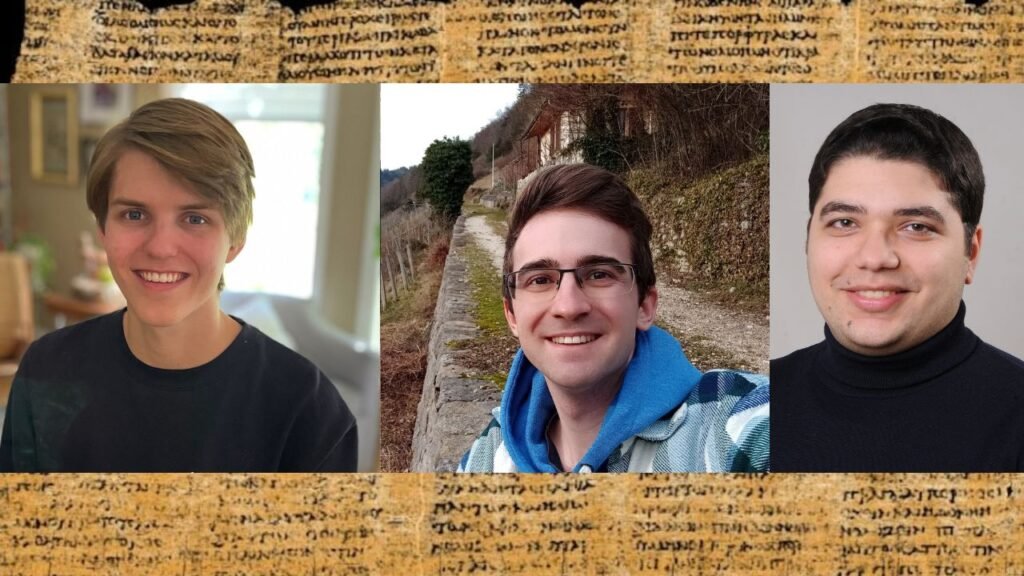
Table of Contents
What is the Vesuvius Scroll?
The Vesuvius Scroll refers to a collection of ancient papyrus scrolls that were carbonized by the eruption of Mount Vesuvius in A.D. 79. These scrolls were discovered in Herculaneum, an ancient Roman resort, and are considered a potential treasure trove for historians. Imagine a time capsule buried beneath ash and libraries holding scrolls whispering of daily life, philosophy, and history. For centuries, deciphering their secrets seemed impossible. Enter a team of daring students wielding a powerful tool: artificial intelligence (AI).
What happened to Mount Vesuvius?
Mount Vesuvius erupted on August 24th, 79 AD, covering the surrounding cities of Pompeii and Herculaneum with ash, pumice, and debris. The eruption was preceded by a major earthquake that caused widespread destruction around the Bay of Naples in February 62 AD. The eruption of Mount Vesuvius was a Plinian eruption, characterized by columns of hot gases and ash that spewed forth to a height of 33 km, ejecting molten rock, pulverized pumice, and hot ash at 1.5 million tons per second, ultimately releasing 100,000 times the thermal energy of the atomic bombings of Hiroshima. The eruption lasted for two days, burying the cities of Pompeii and Herculaneum under deadly ashflows, killing many of their 20,000 citizens. The death toll caused by the eruption is estimated to be around 13,000-16,000, making it one of the most lethal volcanic events in history. The eruption of Mount Vesuvius had a profound impact on art and culture, both in ancient times and the following centuries. From their rediscovery in 1784, the preserved ruins of Pompeii and Herculaneum provided a treasure trove of inspiration for artists and writers.
The Vesuvius Challenge:
The library of scrolls at Herculaneum survived the eruption but did not escape unscathed. They were transformed into pitch-black, carbonized cylinders far too fragile to unroll and read. Several attempts over many years to open the scrolls destroyed many beyond repair. By the late 20th century, experts despaired of ever reading these delicate artifacts.
In 2015, the Sulzberger Foundation launched the Vesuvius Challenge to spur innovative new techniques to read the scrolls without destroying them. The key lay in finding ways to read the interior of the rolled papyri without physically opening them. Over a thousand years after their carbonization, the Vesuvius scrolls remained silent – until now.

AI Becomes the Champion of Vesuvius Scroll
A dedicate team of students from across the globe devised an AI approach to peer inside the Vesuvius Scrolls. Luke Farritor (USA), Youssef Nader (Egypt), and Julian Schilliger (Switzerland). trained deep learning algorithms to recognize the barely perceptible contrast between ink and papyrus revealed in CT scan images of the rolled scrolls. By analyzing these scans, their AI model learned to read letters and words hidden for almost two millennia.
In 2023, their approach bore remarkable fruit – the first legible words from an unopened Vesuvius scroll in modern times. Their AI algorithm succeeded in reading portions of a text likely written by the Greek philosopher Philodemus. This groundbreaking work won the Vesuvius Challenge, unlocking text unseen since before the eruption in 79 AD.
How AI will help in uncovering more historical secrets?
The contents of the Vesuvius Library remain mostly unknown. The student team’s AI techniques open new doors for revealing these texts without destruction. Their work also showcases AI’s potential for unlocking other fragile, illegible, or untranslated artifacts from antiquity. From crumbling scroll fragments to ancient languages like Linear A, AI promises to reveal more of the past than we ever dreamed possible.
Who knows what revelations lie hidden within Herculaneum’s library or elsewhere, awaiting the insight of artificial intelligence? As one of the winning students remarked: “AI can help us resurrect literature from the ashes of Vesuvius.” Indeed, these once ill-fated scrolls may soon enrich our historical understanding thanks to an ingenious marriage of ancient text and modern technology.
Conclusion
Armed with passion and AI, three young students achieved a digital feat centuries in the making. They showed us we’ve only begun to unlock history’s secrets with technology. What puzzles will tomorrow’s innovators solve using AI? The future of discovery is bright, powered by minds young and old, and the tireless hum of machine learning.




